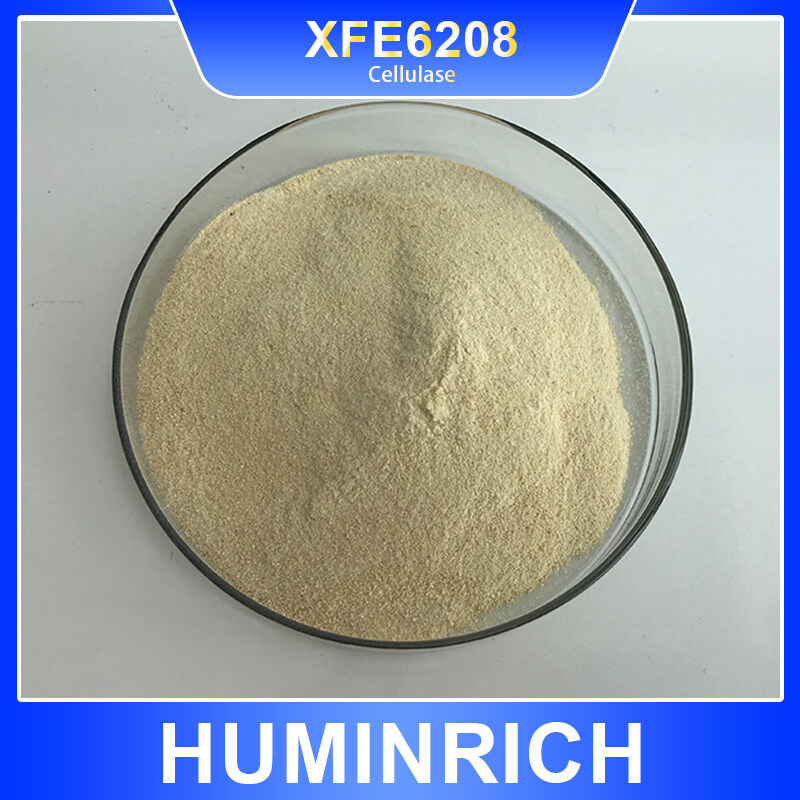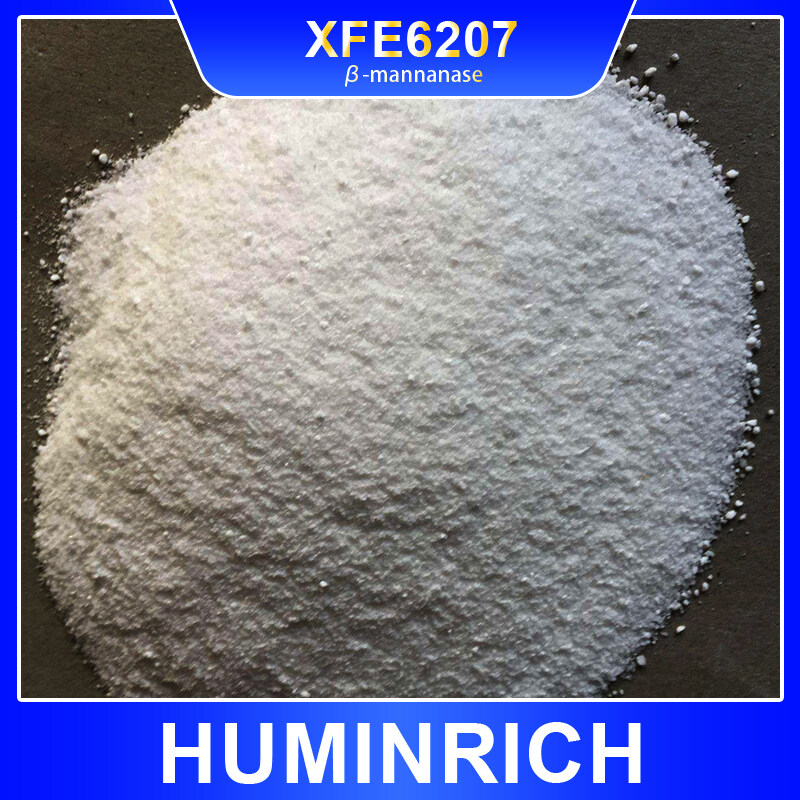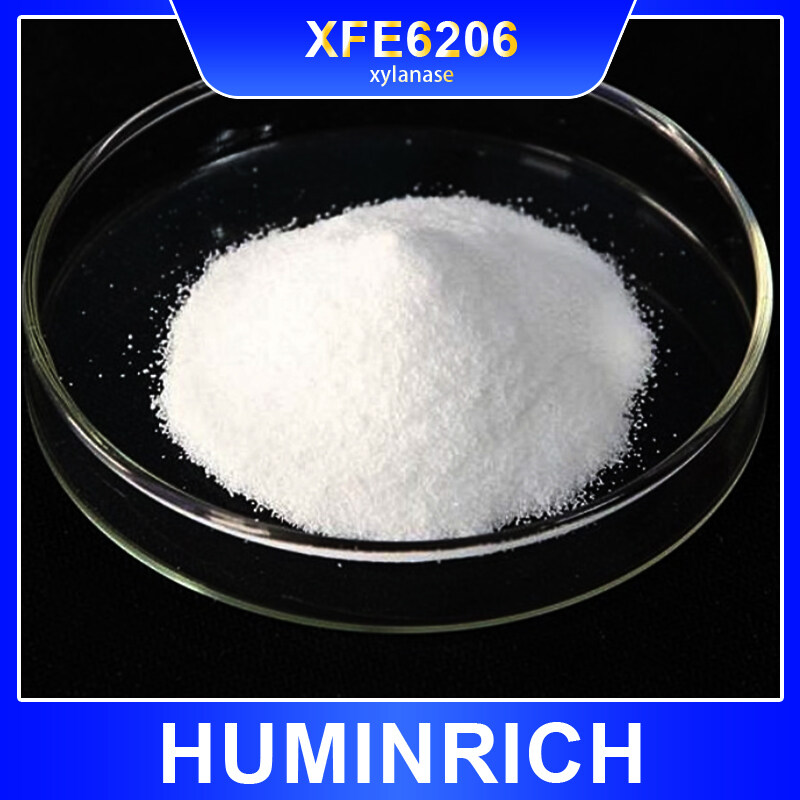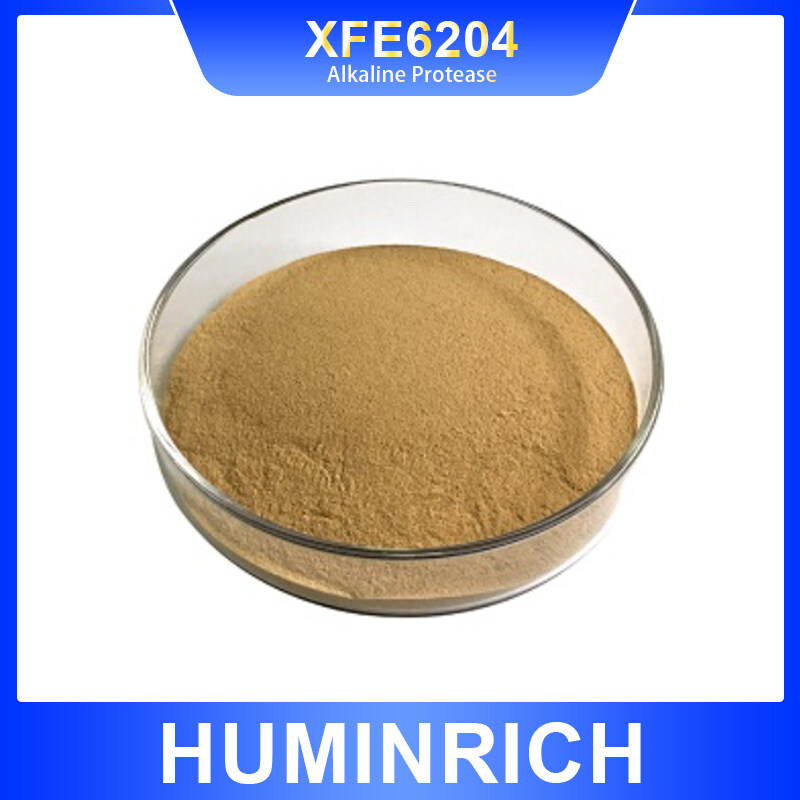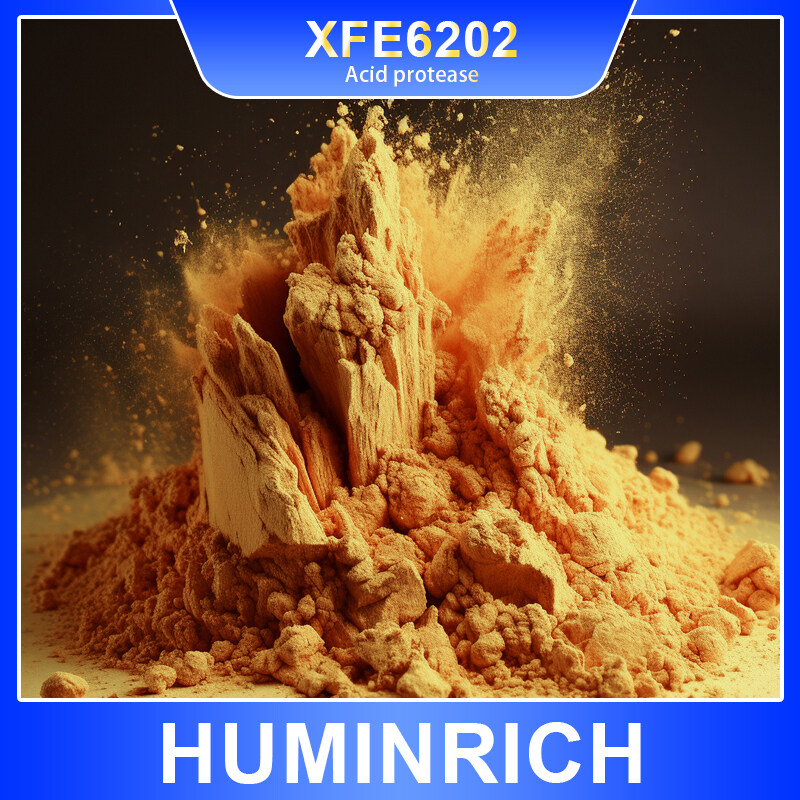Email format error
Email cannot be empty
Email already exists
6-20 characters(letters plus numbers only)
The password is inconsistent
Email format error
Email cannot be empty
Email does not exist
6-20 characters(letters plus numbers only)
The password is inconsistent

Feed Grade Cellulase Cas 9012-54-8
Cellulase (β-1,4-glucan-4-glucan hydrolase) is the general name for a group of enzymes that degrade cellulose to produce glucose. It is not a monomeric enzyme, but a multi-component group that acts synergistically. The enzyme system is a complex enzyme, mainly composed of exo-β-glucanase, endo-β-glucanase and β-glucosidase, as well as highly active xylanase. Acts on cellulose and products derived from cellulose. Microbial cellulase is of great significance in converting insoluble cellulose into glucose and destroying cell walls in fruit and vegetable juices to increase juice yield.
Feed cellulase is an enzyme preparation specially used in animal feed. It can decompose the cellulose in the feed and improve the digestibility and nutritional value of the feed. The enzyme preparation usually consists of a variety of enzymes, including exo-β-glucanase, endo-β-glucanase and β-glucosidase, etc. These enzymes can work synergistically to effectively degrade cellulose.
Catalog of Enzyme Preparations
20240409
|
Type |
Model No. |
Chemical Name |
Activity (u/g) |
CAS No. |
|
Industry Grade |
XFE6001-1 |
Alkaline Protease |
200000 |
9014-01-1 |
|
Industry Grade |
XFE6002-1 |
Neutral protease |
50000 |
|
|
Industry Grade |
XFE6002-2 |
Neutral protease |
10000 |
|
|
Industry Grade |
XFE6003-1 |
Acid protease |
50000 |
9025-49-4 |
|
Industry Grade |
XFE6004-1 |
Lipase |
100000 |
9001-62-1 |
|
Industry Grade |
XFE6004-2 |
Lipase |
8000 |
9001-62-1 |
|
Industry Grade |
XFE6005-1 |
Mesophilic amylase |
4000 |
9000-90-2 |
|
Industry Grade |
XFE6005-2 |
Mesophilic amylase |
15000 |
9000-90-2 |
|
Industry Grade |
XFE6006-1 |
High Temperature Amylase |
40000 |
9001-19-8 |
|
Industry Grade |
XFE6007-1 |
Acid cellulase |
10000 |
9012-54-8 |
|
Type |
Model No. |
Chemical Name |
Activity (u/g) |
CAS No. |
|
Food Grade |
XFE6101-1 |
Natural protease |
100000 |
|
|
Food Grade |
XFE6101-2 |
Natural protease |
150000 |
|
|
Food Grade |
XFE6101-3 |
Natural protease |
200000 |
|
|
Type |
Model No. |
Chemical Name |
Activity (u/g) |
CAS No. |
|
Feed Grade |
XFE6202-1 |
Acid protease |
150000 |
9025-49-4 |
|
Feed Grade |
XFE6203-1 |
Natural protease |
50000 |
|
|
Feed Grade |
XFE6204-1 |
Alkaline protease |
200000 |
9014-01-1 |
|
Feed Grade |
XFE6205-1 |
α-amylase |
5000 |
9000-90-2 |
|
Feed Grade |
XFE6206-1 |
xylanase |
100000 |
9025-57-4 |
|
Feed Grade |
XFE6207-1 |
β-mannanase |
50000 |
37288-54-3 |
|
Feed Grade |
XFE6208-1 |
cellulase |
10000 |
9012-54-8 |
|
Feed Grade |
XFE6209-1 |
β-glucanase |
50000 |
9025-70-1 |
Feed Grade Cellulase
【Product name】Cellulase
【Alternative names】 Ku-zyme; Kutrase; Cellulase, aspergillus niger; Cellulase, trichoderma viride; Fungal cellulase;
【Definition of enzyme activity】: 1 ml of liquid enzyme (or 1 gram of solid enzyme powder), under the conditions of 40℃ pH﹦4.6, hydrolyzes carboxymethyl cellulose sodium (CMC-Na) per minute to produce 1.0ug of glucose, that is It is 1 unit of enzyme activity, expressed in u/g (u/ml) and expressed in U;
【Product specifications】10,000 ~ 400,000 u/g, different energy products can be produced according to customer needs.
【Conditions of Use】
The operating pH range is 4-5.5, the best is 4.8;
The operating temperature range is 30-60℃, and the optimal temperature is 50℃.
|
Appearance |
white powder |
|
Size |
60-80 mesh |
|
Activity (u/g) |
10000 |
|
Loss on Drying |
≤10% |
|
Moisture |
10% Max |
|
Salmonella |
Negative |
|
Escherichia coli (per 100g) |
≤ 3000 |
|
Aflatoxin B1 (μg/kg) |
≤ 10 |
|
As |
<5ppm |
|
Pb |
<5ppm |
|
Hg |
<5ppm |
|
Cd |
<5ppm |
2. Product features:
Improve feed digestibility: Feed cellulase can break down the cellulose in the feed and convert it into nutrients that are more easily digested and absorbed by animals, thus improving the digestibility of the feed.
Increase the nutritional value of feed: By degrading cellulose, feed cellulase can release nutrients originally wrapped in cellulose in the feed, such as protein, fat and minerals, thereby increasing the nutritional value of the feed.
Promote animal growth: The use of feed cellulase can increase the feed intake and digestibility of animals, thereby promoting the growth and development of animals.
Improve animal health: Feed cellulase can improve the intestinal health of animals, reduce the incidence of intestinal diseases, and improve the immunity of animals.
3. Production process:
The production of feed cellulase usually uses microbial fermentation. Specific steps include strain selection, fermentation, extraction and purification. First, microbial strains that can efficiently produce cellulase are screened from nature; then, fermentation is carried out under appropriate culture media and conditions so that the microorganisms produce a large amount of cellulase; finally, through steps such as extraction and purification, high-quality cellulase is obtained. Pure feed cellulase products.
4. Process characteristics:
Strain selection: Select high-yielding and stable microbial strains for fermentation to ensure product quality and yield.
Optimization of fermentation conditions: By optimizing fermentation conditions, such as temperature, pH value, aeration, etc., the production and activity of cellulase can be increased.
Extraction and purification technology: Advanced extraction and purification technology is used to ensure the purity and activity of the product while reducing production costs.
5. Product application:
Feed-grade cellulase is widely used in the field of feed. Its main function is to help animals digest and utilize cellulose and other fiber components in feed more effectively. The following are the main applications of feed grade cellulase in the feed field:
Improve cellulose digestibility: Cellulase can help break down the cellulose in the feed and convert it into digestible simple sugars, thereby improving the animal's digestibility of cellulose.
Increase the energy value of feed: By improving the degradation and utilization efficiency of cellulose, cellulases help to increase the energy value of feed and improve the animal's utilization of energy in the feed.
Improve the taste and digestive performance of feed: Cellulase can make feed easier to digest and absorb, thereby improving the animal's appetite and digestive function.
Reduce feed costs: By increasing the energy value of feed and improving feed utilization, cellulase can help reduce feed costs and improve breeding efficiency.
Promote animal growth and development: By improving the nutritional value and digestive performance of feed, cellulase helps promote animal growth and development and improve production efficiency.
Application to different animal species: Feed-grade cellulase can be widely used in feeds for different animal species such as poultry, livestock, and aquatic products to improve their ability to digest and utilize cellulose.
In general, feed-grade cellulase plays an important role in feed production. By promoting the degradation of cellulose in feed and improving the ability of animals to digest and utilize cellulose, it helps improve feed quality, improve animal production performance, and reduce breeding costs. cost, thereby achieving more efficient breeding management and production.
6. Recommended dosage:
Adding amount of this product per ton of compound feed: 50-200g/T
7. Precautions
Correct dosage application: Feed grade cellulase should be used in accordance with the dosage recommended by the manufacturer to avoid excessive or insufficient addition to ensure the best effect of the product.
Avoid high-temperature treatment: The cellulase added to the feed may lose activity under high-temperature conditions, so care needs to be taken to avoid excessively high temperature treatment during feed processing.
Reasonable formula design: When formulating feed formulas, the addition of cellulase should be considered to ensure that other ingredients in the feed will not affect the effect of cellulase.
Keep dry storage: Feed grade cellulase should be stored in a dry, cool environment, away from moisture and high temperatures, to ensure its shelf life and activity.
Pay attention to pH and temperature: The activity of cellulase is greatly affected by pH and temperature. It should be added and processed according to the optimal pH value and temperature conditions recommended by the manufacturer.
8. Product storage:
Moisture-proof, light-proof, sealed, stored at low temperature (0-10℃), shelf life is 24 months. There is a certain loss of enzyme activity during storage. The enzyme activity loss is 5-10%/6 months when stored at 10°C, and the enzyme activity loss is 10-15%/6 months when stored at room temperature.
9. Packaging, transaction method, delivery method, etc.:
Packaging: 1kg/25kg bag/drum with linner inside.
Payment method: Western Union; T/T; MoneyGram
Shipping method: Sea/Air/Domestic Shipping}
10. After-sales service/customized service/sample service:
Packaging customization: Customized services are provided for packages above 1000KG;
Sample service: samples are available;

